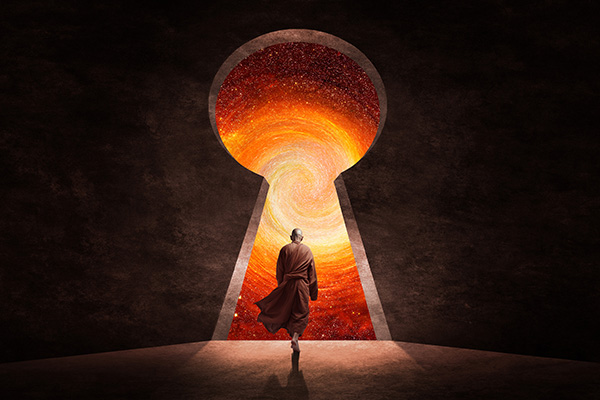religion
Reincarnation And The Karmic Journey Of The Soul
 Reincarnation — the belief that the soul experiences multiple lifetimes through a continuous cycle of birth, death, and rebirth — is embraced by many spiritual and religious traditions worldwide. Wisdom traditions such as Hinduism, Buddhism, Jainism, and various indigenous belief systems integrate reincarnation deeply into their teachings.
Reincarnation — the belief that the soul experiences multiple lifetimes through a continuous cycle of birth, death, and rebirth — is embraced by many spiritual and religious traditions worldwide. Wisdom traditions such as Hinduism, Buddhism, Jainism, and various indigenous belief systems integrate reincarnation deeply into their teachings.
For those who embrace the concept, reincarnation offers a transformative perspective on life and mortality. When we believe that our soul consciousness continues beyond this life, death is no longer something to be feared. Instead, it becomes a transition — a doorway to new opportunities for growth and evolution. Reincarnation provides a rich and expansive framework for understanding the soul’s journey.
Whether you fully embrace the concept or explore it with curiosity, reflecting on the interplay of karma and rebirth can inspire greater mindfulness, compassion, and purpose. In this view, death is not an end, but a passage — a gateway to continued exploration and spiritual progress.
Belief in some form of continued existence beyond this life is widespread. A 2011 Ipsos Global Advisor survey of more than 18,000 people in 23 countries found that 51% of respondents believe in an afterlife that includes beliefs in heaven, hell, and reincarnation. Specifically, 7% of respondents said they believed in reincarnation.
In the United States, a 2021 Pew Research Center survey found that approximately 33% of adults believe in reincarnation. This belief is more prevalent among younger adults under 50 (38%) compared to those aged 50 and older (27%).
The Power Of Knowledge In Psychic Development
 People often ask me what it’s like to be psychic — how I developed my abilities and how it all works. They’re curious about what goes on behind the scenes.
People often ask me what it’s like to be psychic — how I developed my abilities and how it all works. They’re curious about what goes on behind the scenes.
One of the most common questions I get is whether psychics are born with their abilities or if they develop it over time.
From my experience, and from speaking with others in the field, I’d say most psychics are born with their gifts. These abilities are often present in childhood, even if they aren’t fully recognized at the time. However, some people awaken their psychic awareness later in life — often after a profound experience or a period of deep spiritual exploration that helps them access their latent gifts.
In most cases, those who develop their abilities later in life have always had a level of psychic awareness but didn’t recognize it because they weren’t paying attention. Society tends to dismiss psychic phenomena, causing many to suppress or ignore their intuitive senses until something triggers their awakening.
Not everyone with psychic potential chooses to develop it. Some find it overwhelming or even frightening. It can be unsettling to see visions, hear voices, or know and sense things that others don’t. Without proper guidance, these experiences can be confusing and intimidating.
Some people also fear standing out or being judged — skepticism around psychic phenomena can make it difficult for people to openly embrace their abilities. It takes courage to acknowledge one’s gifts and use them in ways that benefit both yourself and others.
Prayer Is A Refuge From The Noise And Chaos
 It is easy to feel overwhelmed these days. Modern life presents many challenges, from personal struggles to global issues.
It is easy to feel overwhelmed these days. Modern life presents many challenges, from personal struggles to global issues.
We live in a world increasingly dominated by negativity, division and fear, where cruelty and hatred are not only considered acceptable, but even celebrated.
It’s really no secret to the spiritually aware person that there is an increasing battle between good and evil. Negative influences often masquerade as appealing or trendy, making it even more important to stay connected to your inner truth and divine guidance.
I often have to turn off my cell phone and television these days as I see the forces of evil growing stronger than ever. It can be hard to stay grounded in hope and clarity.
Fortunately, we have access to a variety of spiritual practices to help us stay grounded, find clarity, and maintain our inner balance. My favorite is a powerful, time-honored tradition: prayer.
While prayer is practiced in many religions and spiritual traditions, it is universal and can be embraced by anyone, regardless of their belief system. It transcends cultural and religious boundaries and is not tied to any dogma or required ritual.
Traditionally, religious prayer follows specific doctrines, but prayer is an open practice available to anyone to contemplate and express their deepest thoughts, feelings, and desires in a mindful, empowering way.
The Ancient Spiritual Tradition Of Smudging
 Just as our physical environment can become cluttered and unclean, our aura or energy field also accumulates stagnant and negative energy.
Just as our physical environment can become cluttered and unclean, our aura or energy field also accumulates stagnant and negative energy.
Regularly cleaning our homes and workplaces promotes health, hygiene and optimal function — and the same principle applies to our personal and spiritual energy. Clearing our energy field and environment helps to release negativity and toxic emotions, stress and anxiety, and promotes a sense of calm, clarity and balance.
Energy cleansing is essential for removing blockages that may be hindering personal and spiritual growth or disrupting your connection to spirit and the divine. Over time, lingering negative or toxic energy can even manifest as mental health issues, spiritual disconnection and even physical ailments.
By maintaining a regular practice of energy cleansing, you create a positive, harmonious flow of energy that supports overall health and well-being. In addition, a clear energy field sharpens your intuition and inner guidance, making it easier to align with your higher self and make decisions that are aligned with your greatest good.
Smudging is also a powerful way to clear negative energy attachments and banish malevolent spirit entities.
One of the most time-tested and effective methods of clearing unwanted energy is smudging, or smoke cleansing — an ancient purification ritual steeped in history and practiced by various cultures, religions, and spiritual traditions around the world.


